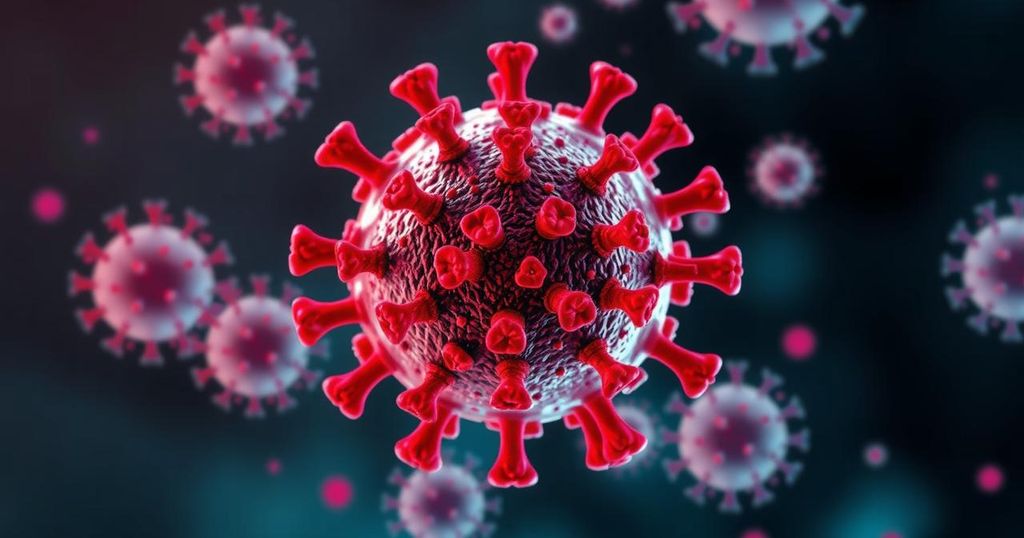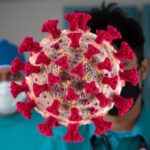Politics
ASIA, CENTRE FOR DISEASE CONTROL AND PREVENTION, CHINA, CHINA CDC, CHINESE, CHINESE CENTRE FOR DISEASE CONTROL AND PREVENTION, DATA ANALYSIS, GURUGRAM, INDIA, KU, KULDEEP KUMAR GROVER, MARKET RESEARCH, MEDICINE, MEXICO, NORTH AMERICA, NOW, PAM MOORE, PANDEMIC, RESEARCH, SETH GODIN, TECHNOLOGY
Nia Simpson
India’s Vigilance Amidst Rising HMPV Cases in China
China is experiencing a surge in HMPV cases, particularly among children, prompting health authorities to implement monitoring strategies. Indian health officials report no cases but encourage public vigilance through hygiene practices. Experts stress the importance of surveillance to mitigate risks, as HMPV is known for mimicking symptoms of other respiratory illnesses and contributing to seasonal outbreaks.
Recent reports indicate a significant increase in Human Metapneumovirus (HMPV) cases in China, primarily affecting children. The virus, which is transmitted through respiratory droplets and contact with contaminated surfaces, poses a potential risk for broader public health issues. As noted by the Chinese Centre for Disease Control and Prevention, HMPV has an incubation period ranging from three to five days and often results in repeated infections due to its weak immune protection. In response, China is implementing a monitoring system for pneumonia of unknown origin to enhance its preparedness against respiratory infections.
In India, however, health experts such as Dr. Kuldeep Kumar Grover from CK Birla Hospital have indicated that no HMPV cases have been reported thus far. He advises the public to maintain personal hygiene practices—such as frequent hand washing and wearing masks in crowded situations—to minimize the spread of respiratory viruses. The National Centre for Disease Control (NCDC) is also closely observing the situation to ensure proactive measures are in place.
Human Metapneumovirus is recognized as a significant pathogen causing respiratory infections, with symptoms similar to the flu, including fever, cough, and shortness of breath. It spreads primarily through coughing, sneezing, and close interactions. Experts emphasize the necessity for heightened surveillance and early detection mechanisms to control potential outbreaks. Dr. Arjun Dang of Dangs Lab underscores the importance of increased awareness regarding HMPV given its contribution to seasonal illnesses globally.
Although the current outbreaks raise concerns, Indian health authorities are vigilant and ready to act if necessary. Public adherence to hygiene protocols, alongside coordinated monitoring by health agencies, is vital to mitigate the risks posed by HMPV.
In conclusion, while the situation demands attention, experts urge the public to remain calm and prioritize preventive measures. The monitoring of respiratory infections will continue to play a critical role in safeguarding public health amidst evolving viral threats.
Human Metapneumovirus (HMPV) is a pathogen that has gained attention due to its rising prevalence in China and potential impact on global health. As a member of the Pneumoviridae family, HMPV contributes to respiratory infections that can be serious, particularly in vulnerable populations such as children and the elderly. Understanding its transmission modes and symptoms is essential for public health readiness, especially as countries like India monitor developments to avoid a repeat of crises seen with other viral outbreaks such as COVID-19.
In summary, while the rising cases of HMPV in China warrant attention, India has not yet reported any cases, allowing health authorities to focus on proactive measures. Maintaining public awareness regarding preventive health practices is crucial, alongside the vigilant monitoring of respiratory infections. Preparedness and responsible public behavior are key to managing the risks associated with respiratory viruses effectively.
Original Source: m.economictimes.com








Post Comment